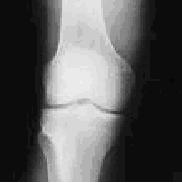Quad Strength Predicts Knee OA & Pain!
Reference:Segal NA et al Effect of thigh strength on incident radiographic and symptomatic knee osteoarthritis in a longitudinal cohort. Arthritis Care & Research; 2009 Volume 61 Issue 9 ; 1210 – 1217
The question: “Can knee extensor strength predict risk for radiographic tibio-femoral osteoarthritis (OA) or knee pain?”
This relatively massive study involved a few thousand adults ages 50-79 years. The researchers followed over 5000 knees that at the baseline did not have any evidence of radiographic knee OA.
Quadriceps isokinetic strength was measured at baseline and the subjects were re-x-rayed after 30 months.
Result Summary: Two and a half years later, about 10% of the people in the study developed knee OA, and those with weak quad muscles, had significantly more OA and pain.
In a Nutshell: Knee extensor strength was not predictive of radiographic knee OA, BUT was predictive of symptomatic knee OA.
It’s important to mention the other potential risk factors in the development of knee OA & pain such as: inactivity, obesity, congenital deformities, joint injuries or surgery, and vitamin D deficiency.
What PTs need to promote: A 2009 study involving thousands of men and women showed that having strong thigh muscles could help prevent knee pain and osteoarthritis. Physiotherapists are the ideal health care providers and experts in prescribing the correct strengthening exercise program for the prevention of knee arthritis.
Posted on: January 26, 2010
Categories:


